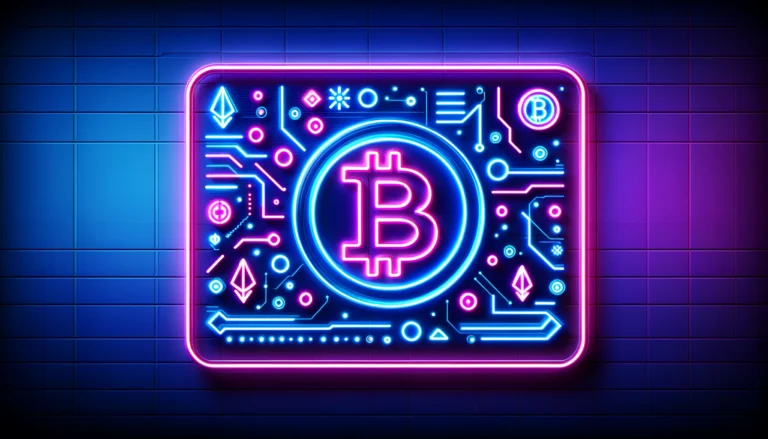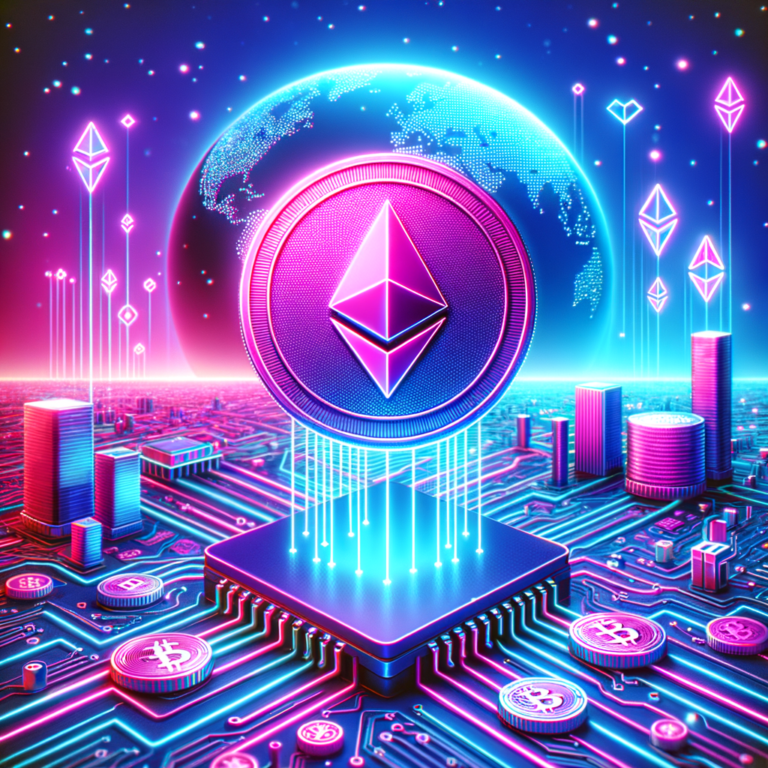Understanding the Value: Top NFT Sales Explained
The digital landscape is ever-evolving, and one of the most intriguing developments in recent years is the advent of Non-Fungible Tokens (NFTs). These digital assets, which verify ownership of a unique item using blockchain technology, have shaken up the art world and beyond, leading to unprecedented auction sales and stirring discussions around digital ownership and value creation. This article delves into what NFTs are, explores their rise in various sectors, breaks down the top sales, and predicts future trends in this dynamic market.
Exploring the Basics: What are NFTs?
NFTs, or Non-Fungible Tokens, represent ownership of a unique item or asset, stored on a blockchain. Unlike cryptocurrencies like Bitcoin, which are fungible, meaning each unit is the same as every other unit, NFTs are unique and cannot be exchanged on a one-to-one basis. This uniqueness allows NFTs to represent digital art, music, videos, and more, linking the digital file to a verified owner on the blockchain. Essentially, NFTs transform digital works into one-of-a-kind, verifiable assets that are easy to trade on the blockchain.
The technology behind NFTs is primarily supported by the Ethereum blockchain, although other blockchains have started to support them as well. Each NFT is embedded with metadata that distinguishes it from any other NFT and proves its authenticity. This digital certificate of ownership can be bought, sold, and traded, while the record of ownership is kept on the blockchain. As a result, NFTs have opened a new frontier in the digital world, combining technology with the rights to digital content.
Moreover, NFTs go beyond just art and collectibles; they are beginning to redefine digital interactions in the worlds of gaming, fashion, and even real estate. By offering a way to possess unique digital items, NFTs create scarcity amongst otherwise easily replicable digital files, adding a layer of value to digital assets that didn’t exist before.
The Rise of NFTs in Digital Art and Beyond
The ascent of NFTs has been meteoric in the realm of digital art, where they first caught the public’s eye thanks to high-profile sales and celebrity endorsements. Artists and creators found in NFTs a new way to monetize their digital creations, directly reaching global audiences without intermediaries. This direct-to-consumer approach not only increases the profitability for artists but also enhances the connection between artists and their audiences.
Outside of digital art, NFTs are rapidly spreading into other sectors. In the music industry, artists are using NFTs to offer exclusive content and experiences to their fans, such as limited-edition releases and VIP concert experiences. In gaming, NFTs allow players to own unique in-game assets and even trade them with other players, providing a new revenue model within the digital economies of games.
Furthermore, the fashion industry sees NFTs as a way to authenticate ownership of exclusive digital and physical items, potentially reducing counterfeiting. There are also explorations into using NFTs for ticketing, to prevent fraud and scalping, and in real estate, to simplify and secure the process of buying and selling property. The versatility of NFTs is proving to be boundless, paving the way for innovative applications across various industries.
Record-Breaking Sales: The Top NFTs Analyzed
Some NFTs have fetched jaw-dropping prices at auction, attracting the attention of the media and investors alike. Perhaps the most famous NFT sale to date is Beeple’s "Everydays: The First 5000 Days," which sold for a staggering $69 million at Christie’s. This digital collage, comprising 5000 individual images created over as many days, set a precedent for the potential market value of digital art.
Another notable NFT is CryptoPunk #7523, which sold for over $11 million. Part of a series of 10,000 uniquely generated characters, CryptoPunks have become one of the earliest and most iconic projects in the NFT space. These pixel-art characters have garnered a cult following, influencing the entire NFT culture and market.
Additionally, the first tweet ever posted by Twitter founder Jack Dorsey was sold as an NFT for just under $3 million. This illustrates the broad spectrum of what can be considered valuable in the NFT marketplace, extending the reach of NFTs into social media and the memorabilia of the digital age.
Factors Driving Prices: What Makes an NFT Valuable?
The valuation of NFTs is influenced by several factors, with rarity and exclusivity being paramount. The more unique or scarce an NFT is, the higher its potential value. For instance, an NFT representing a one-of-a-kind digital artwork or a limited edition collectible from a renowned artist can attract significant interest and demand.
Provenance plays a critical role in an NFT’s value. The digital record of ownership adds to the NFT’s history and authenticity, factors that are especially important in markets like art where the creator’s identity and the item’s history justify a premium price. Furthermore, utility can enhance an NFT’s worth, such as when the token offers additional benefits like access to exclusive events, services, or rights within a digital ecosystem.
Market dynamics also influence NFT prices. Speculation, media hype, and celebrity endorsements can drive up prices temporarily. However, long-term value is more likely sustained by the NFT’s intrinsic qualities, such as artistic merit, historical significance, or its utility in providing ongoing value to its holder.
Case Studies: Insight into Million-Dollar NFTs
Beeple’s "Everydays," as previously mentioned, is a prime example of digital art gaining substantial monetary value in the NFT space. Its high auction price reflects not only the piece’s visual and conceptual complexity but also Beeple’s reputation and his followers’ loyalty. This sale was pivotal, as it signaled to artists and collectors that digital art could compete financially with traditional art.
Another illustrative case is NBA Top Shot, which packages and sells NBA game highlights as NFTs. Some of these have sold for hundreds of thousands of dollars. The high value is partly due to the global popularity of basketball, but also because of the innovative way it enhances fan engagement by letting them own specific moments in sports history.
Finally, the sale of virtual land plots in platforms like Decentraland reflects another facet of NFTs’ versatility. These sales show how virtual real estate can accrue real-world value, providing space for advertising, social gatherings, and e-commerce within a virtual world. The idea of owning a piece of a virtual world demonstrates how NFTs are redefining value and ownership in the digital age.
The Impact of Celebrity Endorsements on NFT Value
Celebrity involvement has proven to be a powerful catalyst in the NFT market. When well-known figures from the arts, entertainment, or sports sectors engage with NFTs, whether by creating, purchasing, or promoting them, they bring significant attention and credibility to the assets. This often leads to an increase in demand and, consequently, price.
For instance, when celebrities like Elon Musk or Grimes release or endorse NFTs, their substantial social media followings and influence can drive up sales dramatically. This phenomenon not only boosts the profile of individual NFTs but can also spur interest in the NFT market as a whole, attracting new buyers and sellers.
Moreover, celebrity endorsements help to legitimize the concept of NFTs to the broader public. As these prominent figures embrace NFTs, it signals to the market that NFTs are a worthy investment, which can lead to greater market stability and the development of higher-quality NFT offerings.
Future Trends: Predicting the NFT Market Trajectory
The NFT market is still in its infancy, and its path forward is poised for various innovations and shifts. One potential trend is the intersection of NFTs with emerging technologies such as augmented reality (AR) and virtual reality (VR), which could revolutionize how people interact with NFTs, making them more immersive and engaging.
There is also a growing focus on the sustainability of NFTs, particularly concerning the environmental impact of blockchain technology. This is likely to lead to increased adoption of more energy-efficient blockchains and the integration of NFTs in ways that prioritize environmental consciousness.
Lastly, as the market matures, we may see more standardized processes and regulations come into play, which could help address current issues such as copyright infringements and market manipulation. This would not only protect creators and investors but also enhance the legitimacy and stability of the NFT market.
NFTs have carved a niche that has disrupted traditional notions of art and ownership, creating new opportunities and challenges in the digital economy. As they continue to permeate various sectors, understanding their nature, impact, and potential is crucial. Whether NFTs are a fleeting trend or a cornerstone of future digital asset markets remains to be seen, but their current trajectory suggests a transformative shift with wide-reaching implications. As we explore this uncharted territory, the blend of technology, creativity, and market dynamics will undoubtedly continue to fascinate and innovate.


